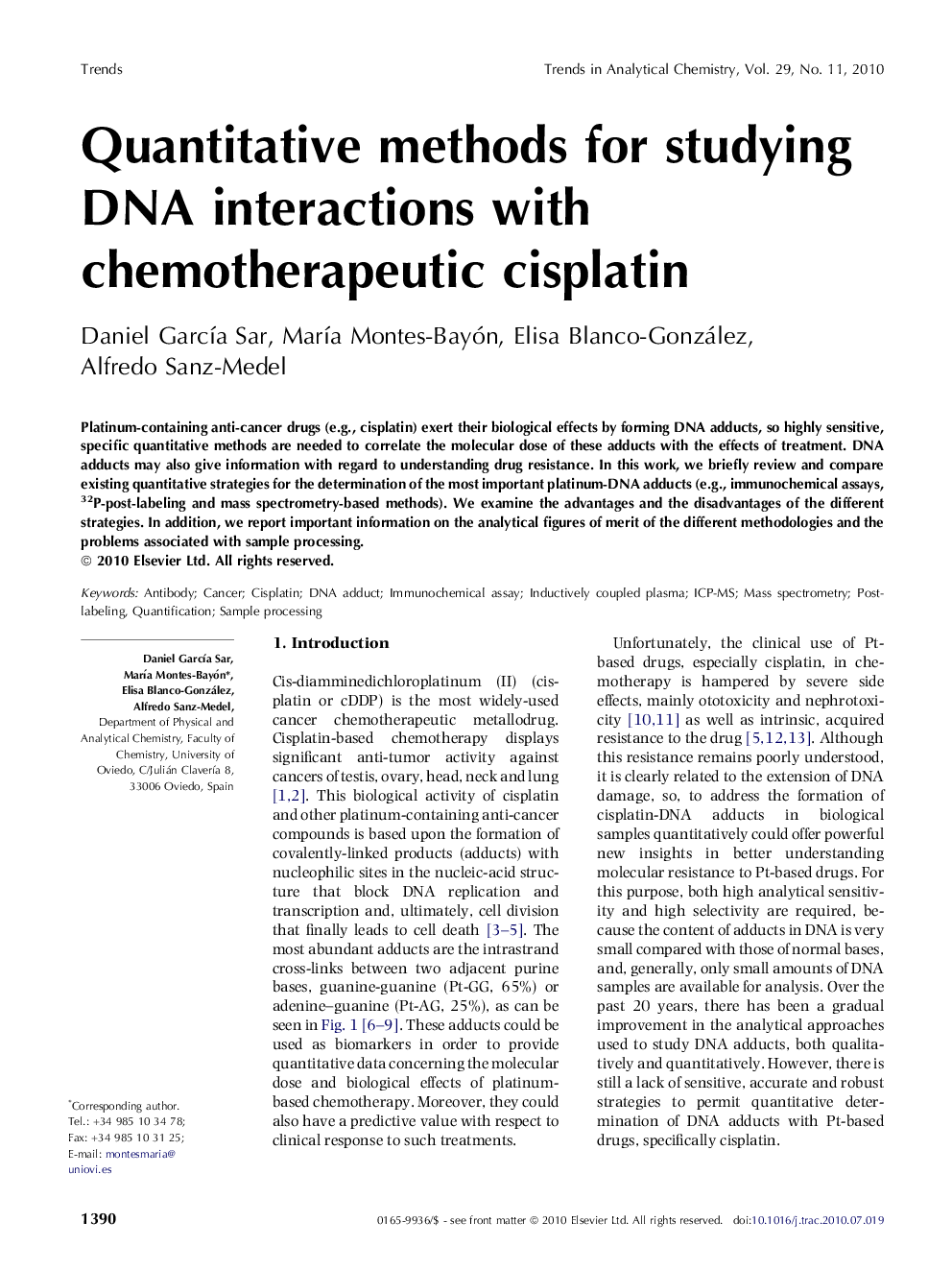| کد مقاله | کد نشریه | سال انتشار | مقاله انگلیسی | نسخه تمام متن |
|---|---|---|---|---|
| 1249311 | 970617 | 2010 | 9 صفحه PDF | دانلود رایگان |

Platinum-containing anti-cancer drugs (e.g., cisplatin) exert their biological effects by forming DNA adducts, so highly sensitive, specific quantitative methods are needed to correlate the molecular dose of these adducts with the effects of treatment. DNA adducts may also give information with regard to understanding drug resistance. In this work, we briefly review and compare existing quantitative strategies for the determination of the most important platinum-DNA adducts (e.g., immunochemical assays, 32P-post-labeling and mass spectrometry-based methods). We examine the advantages and the disadvantages of the different strategies. In addition, we report important information on the analytical figures of merit of the different methodologies and the problems associated with sample processing.
Journal: TrAC Trends in Analytical Chemistry - Volume 29, Issue 11, December 2010, Pages 1390–1398